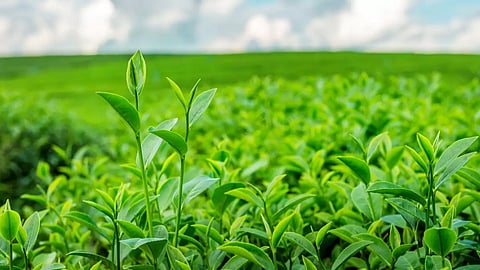
- Home
- Live Blog
- Breaking News
- Top Headlines
- Cities
- NE News
- Sentinel Media
- Sports
- Education
- Jobs

While climate change has already become a reality and countries across the globe are beginning to experience its impact in recent years, the 200-year-old tea industry in Assam too has of late started feeling its pinch. As pointed out by industry captains, Assam’s tea industry, which has been plagued with several issues in recent decades, is now looking at climate change as the most difficult challenge before it. The tea industry is heavily dependent on the weather. Tea plantations require, on average, 150 cm to 200 cm of annual rainfall. But, with practically no rainfall occurring, particularly in the tea-growing districts of upper Assam, since January, the first flush, which is said to be the best tea, is almost on the verge of being missed this year. The North Eastern Tea Association (NETA), a body that represents over 172 companies and gardens spread across Assam, Nagaland, and Arunachal Pradesh, expressed in its recent Biennial General Meeting serious concern over the changing rain pattern and expressed apprehension that this could be the beginning of a climate change impact on tea. Deficit rainfall during some months and heavy rainfall in some other months has already led to an imbalance in the distribution of rainfall throughout the year, and this has become a kind of regular recurrence in the past few years, as has been pointed out. What is also being observed by the tea industry is that rainfall in the tea districts has begun to become highly localised, causing heavy rainfall in some pockets and scanty rainfall in the adjoining areas of those pockets. The situation is such that Assam’s tea industry has resorted to relying increasingly on irrigation, a practice that was practically unheard of three decades ago. Given this scenario, the industry has now urged the government to come forward to lend a helping hand in the installation of irrigation facilities, preferably drip irrigation, mainly because of the lower requirements of groundwater and the convenience of fertigation. It is important to note that the industry is now also looking at water harvesting by various means, including by digging ponds and water reservoirs. This is definitely also the time for those in the R&D sector to take a fresh look at the changing needs of the tea industry in the wake of climate change, with a focus on cultivars that are resistant to climate change. The lack of rainfall has already made the plantations vulnerable to various pest attacks, and there are growing infestations of pests. Scientists at Tocklai Tea Research Institute, the world’s oldest tea R&D institute, may also take this as a big challenge and look for proper solutions. The industry captains in the NETA Biennial General Meeting have also reportedly expressed their eagerness to know whether the Department of Climate Change in the Assam Government has already taken into account or not the challenges posed by climate change before the most important tea industry of the state. Some projections have predicted that tea-producing areas will shrink under future climate scenarios, potentially hammering farmers and national economies. If that is true, then it is time for the government to wake up to the situation before it really deteriorates.